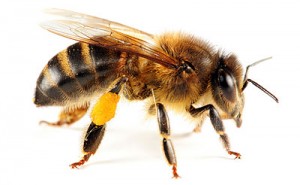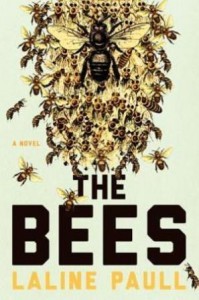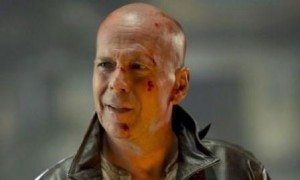
The Bees: accept, serve and obey. Or else.
I enjoy reading dystopian fiction and I like bees, as long as they stay next to the flowers and away from my children, but I’ll be honest: I think it was the brilliant yellow cover that first attracted my attention.
What’s it about?
Flora 717 is a worker bee born into the lowest kin in her totalitarian hive society. Focused almost entirely on her need to accept, serve, and obey the Queen and her priestesses, Flora gradually takes on different roles within what is otherwise a very strictly segregated community and, in so doing, begins to reveal the secrets at the heart of the hive. Then she commits the greatest sin possible in her deeply religious society; can she survive it? Can her hive?
What’s it like?
“Do bees really DO that?” They do dance to communicate to other bees where they have located pollen and honey.
Fascinating, if slightly perplexing at times.Ā I spent much of the novel thinking “Do bees really DO that?” and a slightly ridiculous period of time after reading the final pages Googling to find out. The short answer is, mostly, yes. For instance, bees really do dance to communicate to other bees where they have located pollen and honey. The bees within the hive exist in a deeply rigid theocracy, and the initial chapters establish the way this society works as Flora hatches and is inducted into her designated role via an ‘experiment’.

A honeybee. Not to be confused with those evil beasties, wasps.
From the outset, I found the storytelling convincing as I followed Flora’s progress. There are a few odd moments, such as bees eating ‘bread’ in a ‘canteen’, when the humanising of the bees risks undermining the reality of the mileau, but on the whole this is an interestingly realised tale of wasp attacks, religious purges, internal massacres and the joy of flight, to name just a few elements.
Is it really a dystopia?
Some commentators have made comparisons with Margaret Atwood’s ‘The Handmaid’s Tale’; others have pointed out that this tale is really about bees being bees and seem to have felt cheated into reading the novel by a comparison they subsequently deemed invalid. While the bees are definitely “being bees”, throughout the novel Paull draws us into a dark world full of threatening sage priestesses who are concealing brutal secrets at the centre of the hive. This is a strictly hierarchical society in which the most powerful deliberately deprive the least powerful of knowledge in order to sustain the status quo. Traitors risk violent execution and order is partly sustained through the repetition of simple mantras.

This cover is definitely creepier.
Creating a particular type of novel is, obviously, not just a matter of ticking certain boxes, but this novel certainly contains many features typical of dystopian fiction; the whole work feels politically charged and the society depicted is clearly oppressive. It feels dystopian to me and while you certainly could read this as simply a fascinating tale about bees being bees, I defy you not to read something more into the shocking scene when the sisters turn upon the remaining drones. Carefully developed anthropomorphism like this encourages readers to make connections to their own world, and Paull herself says: ‘the most constant comment Iāve had from readers is āIāll never look at bee[s] the same way again.ā’
Final thoughts
As the seasons shift, the rhythms of the hive alter and a year passes by. Flora gradually changes and becomes almost invincible. She survives wasp attacks, cunning spiders, strange telephone poles, devious sisters and the strange machinations of her own body. In short, as is typical in this kind of fiction, she ceases to be an ‘everyman’ or ‘everywoman’ and becomes a heroine, daringly subverting established norms in an attempt to promote her own interests above those of the state. This makes for exciting fiction, but. BUT.
WHY is Flora 717 alone able to transcend supposedly “untranscendable” boundaries? And yes, obviously, she has to in order to create an exciting plot…but that’s Paull’s motivation, and is not relevant to the logic of the book’s inner world. There are hints that she’s born of a slightly different strain of bee, but I didn’t find this sufficient to make her into the super-bee she becomes. Perhaps this is a minor quibble, given how quickly I read the book and how thoroughly I enjoyed reading it, but her situation reminded me a little of those action films starring Bruce Willis where the bad guys and good guys always get up and stagger on, even if you drop a car on them. While both novels and films require us to suspend our disbelief, too much suspense does invite collapse.

“What? You shot me? Was I meant to die or something?”
Speaking of which…the novel’s brief prologue and epilogue remind readers of the ways humans interact with bees and seem designed to encourage us to feel a greater sense of guardianship, particularly in light of modern fears about colony collapse disorder.
Overall, this is a fascinating read about a rather incredible insect that has somehow so far avoided becoming the star of a Disney film. Well worth reading. And when you’re done, you might feel inspired to watch the next bee you see rather more closely.